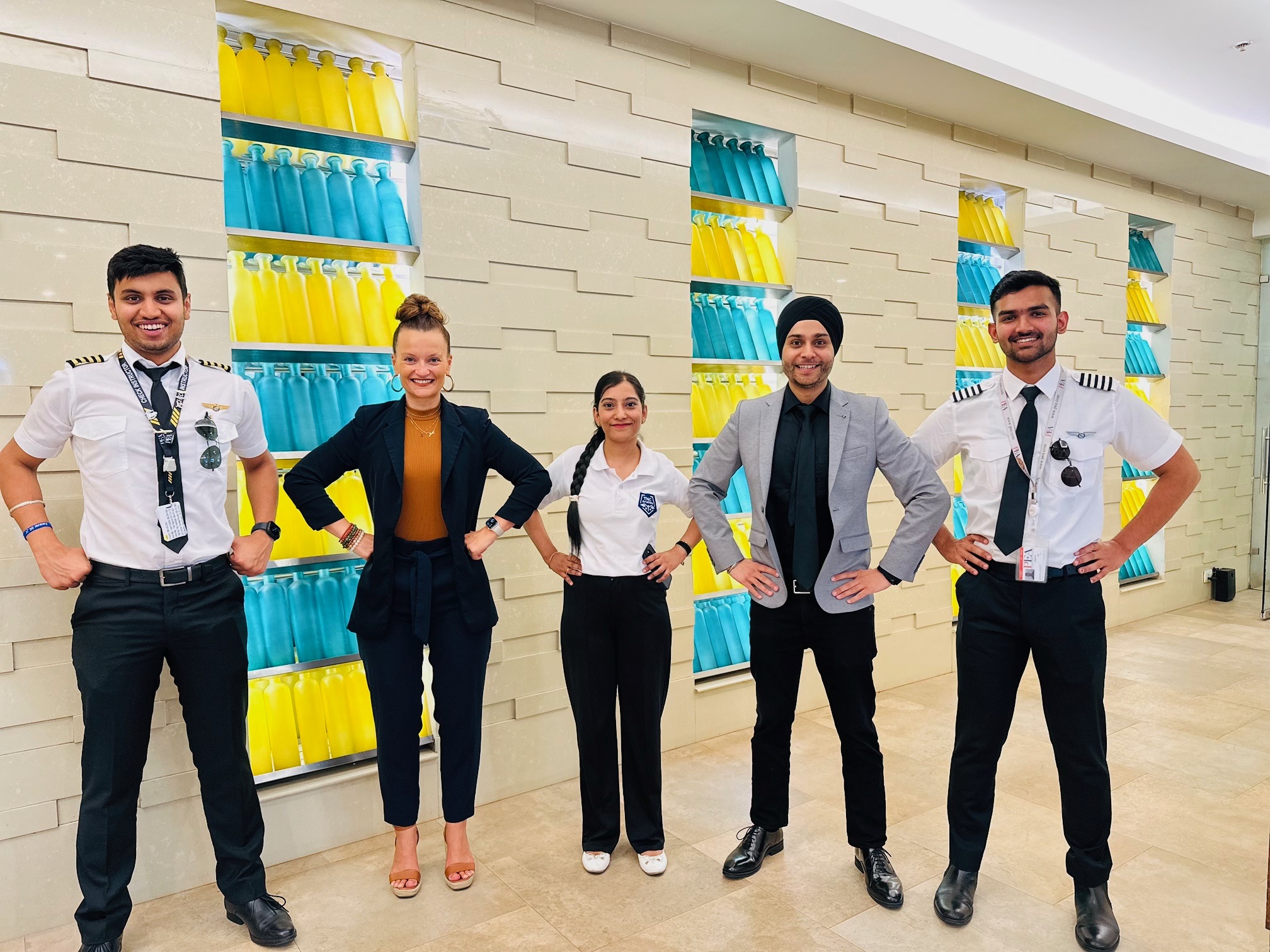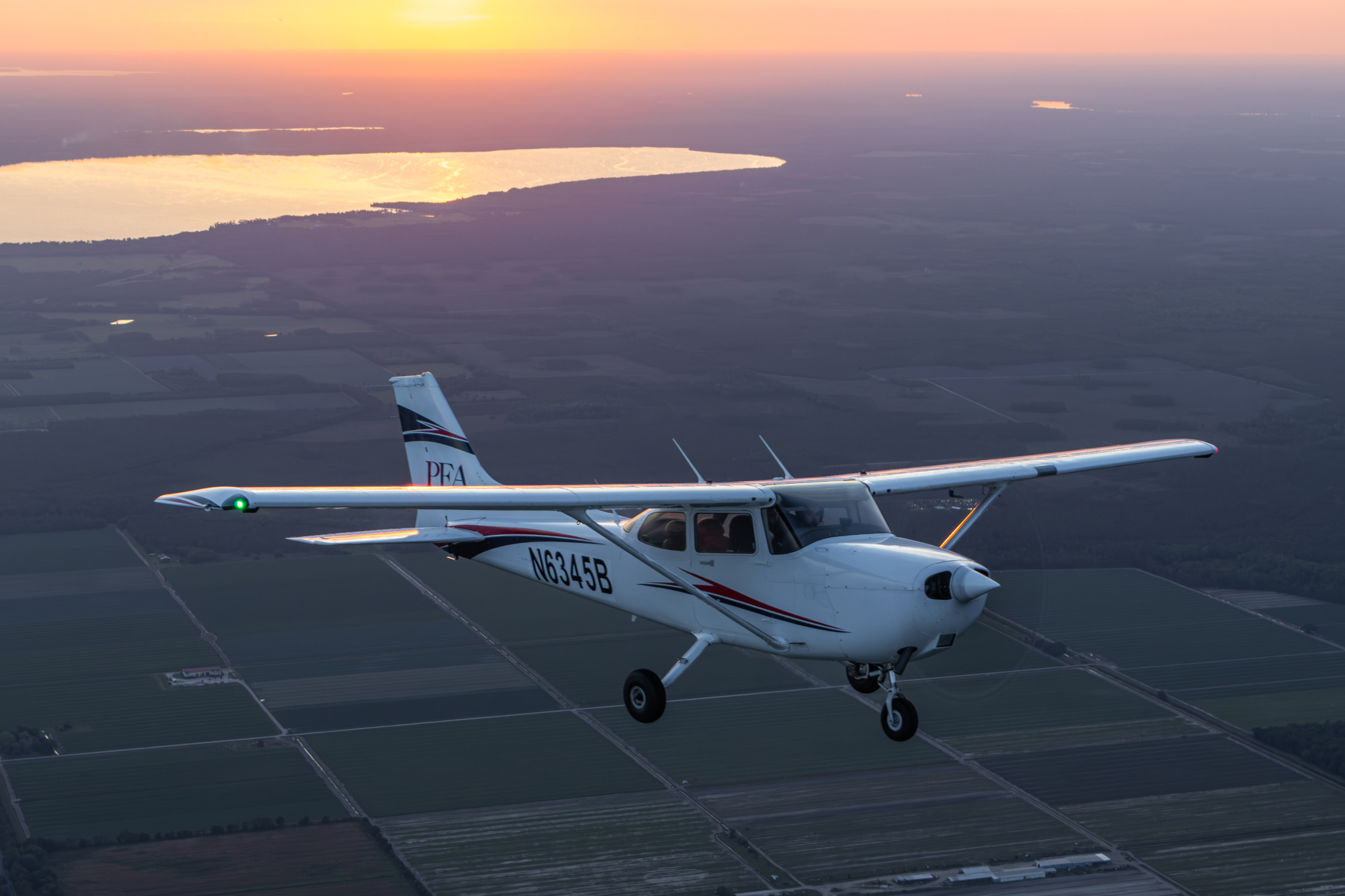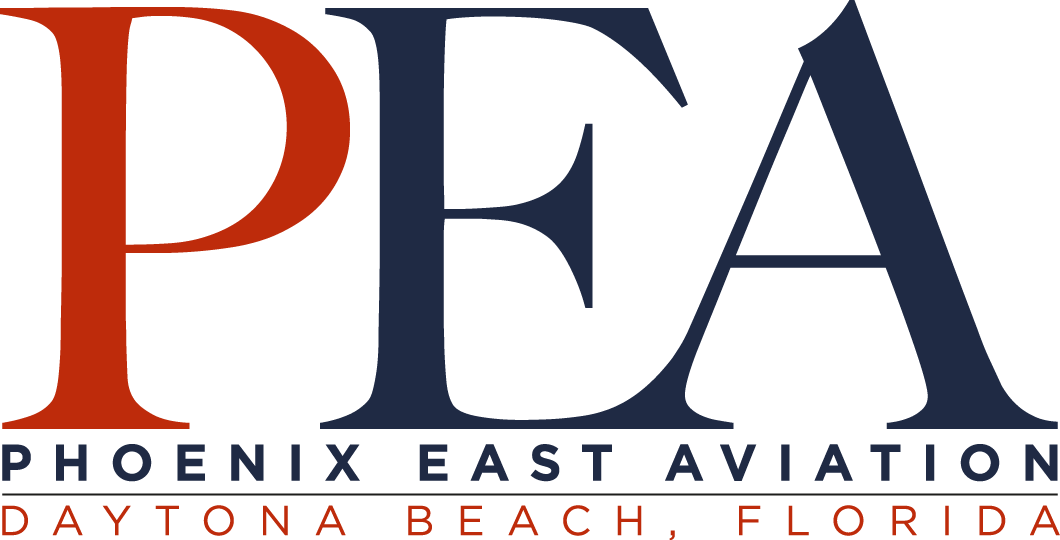Soaring to New Heights: A Guide to Obtaining a Commercial Pilot License
The aviation industry is a realm of boundless possibilities, where the sky is not the limit, but the beginning. Phoenix East Aviation offers several programs and courses for prospective students: the courses range from Full Private and Professional Programs which takes you from 0 to “hero”, and individual Part 141 or Part 61 courses. At the heart of this awe-inspiring industry lies the coveted Commercial Pilot License, a gateway to a world of soaring adventures and fulfilling careers. In this guide, we will explore the exhilarating journey of obtaining a commercial pilot license and the unparalleled opportunities it brings. It is their responsibility as a professional pilot training school, to not only train students to become successful pilots, but also set them up for success by helping them connect and create relations with airlines they could potentially have a career with after their training is complete. The aviation industry has ramped up in all facets and the aviation workforce must grow to support this demand. A statement in the 2022 Boeing Pilot and Technician Outlook “demand for pilots is likely to soar. Projections indicate that, over the next 20 years, 602,000 new pilots will be needed to meet demand from commercial operators” is an eye-opening summary of this demand.
What is a Commercial Pilot License?
A Commercial Pilot License (CPL) is the key to unlocking a career in aviation. It allows individuals to be compensated for their piloting services. Unlike a Private Pilot License (PPL), which restricts pilots from receiving payment for their flights, a CPL permits them to fly for hire. This critical distinction sets the stage for a flourishing career in the aviation industry. However much like the misconception many have about obtaining a PPL and flying private jets, many associate receiving a CPL and flying for a commercial airline. Although obtaining a CPL allows you the opportunity to fly for compensation or for hire, it does not correlate to the airlines just yet. Once completing the hour requirements, a pilot will move on to obtain their Airline Transport Pilot License, which is what they will need to fly commercially.
PEA is uniquely approved by the FAA under FAR Part 141.55(e) to complete the Initial Commercial Pilot License in 50 hours, compared to nearly all other FAA Part 141 Flight Schools requirements of 120 hours. PEA offers two pathways to accomplish this. They offer the commercial pilot license in both the Single Engine and the 2 different Multi-Engine aircraft.
Eligibility and Prerequisites
To embark on the path to a CPL, aspirants must meet specific eligibility criteria. These include being at least 18 years old, possessing a valid medical certificate, and having a minimum number of flight hours, often acquired through a PPL. Additionally, candidates must fulfill educational prerequisites, demonstrating a dedication to learning and understanding the art and science of flying. Students at PEA will begin by completing their PPL, followed by their Instrument Rating, and then they have the choice between obtaining their CPL in single engine or multi-engine. This gives them the choice to gain their hours and experience in two of three different types of aircraft. PEA has a fleet of single engine Cessna 172s, and Piper Senecas as well as Diamond DA 42s for multi engine. Both the Cessna 172s and Diamond DA 42s have G1000 glass cockpits.
The Training Process
The training process towards obtaining a CPL is rigorous and comprehensive. It encompasses classroom instruction, simulator training, and extensive in-flight training. These components cover a range of vital skills, from mastering flight maneuvers and emergency procedures to honing navigation and decision-making abilities.
PEA has a free tutoring program that many students utilize as an additional resource if they find themselves struggling in any aspect of their training. Although it is beneficial to any student at any point during their training, it is important for CPL students to realize that this is the last license they will receive at PEA. The tutoring program PEA provides is run by fellow students who are working on obtaining their Instructor Ratings. This also means the student who is receiving the tutoring gains reassurance, and leaves feeling confident knowing that they were assisted by someone who has once been where they are in their training. If the CPL student chooses to continue onto their Instructor Ratings, it is important for PEA that their students feel comfortable, confident, and ready to take on the skies.
Your CPL is the last license you will obtain at PEA, and if you choose to continue to gain your Instructor Ratings, you will be able to work as an instructor to gain the 1500 hours that the airlines require.
Written Examinations
Prospective commercial pilots must successfully navigate through a series of written exams. These assessments cover essential subjects, including regulations, navigation, aerodynamics, and more. To conquer these exams, diligent preparation and a deep understanding of aviation principles are essential.
Practical Test (Checkride)
The pinnacle of the journey to a CPL is the practical test, commonly known as the “checkride”. This test includes both oral and flight components, evaluating the candidate’s knowledge, skills, and ability to handle various flight scenarios. Successful candidates display their mastery of flight techniques and decision-making under the watchful eyes of examiners.
Building Flight Experience
Following the acquisition of a CPL, the next step is to accumulate flight experience. Opportunities to build flight hours include becoming a flight instructor, working for regional airlines, or joining charter companies. Our instructors get the opportunity to teach and fly year around. We credit this to Florida’s weather and flight conditions, and because of this, they can gain between 80-100 hours per month.This post-licensing experience is crucial for advancing one’s career within the aviation industry.
Benefits of a Commercial Pilot License
Holding a CPL offers a multitude of professional and personal advantages. From an exciting career as an airline pilot to the freedom of exploring the skies, the possibilities are endless. The journey towards a CPL opens doors to various career paths, from commercial airlines to corporate and charter flying.
As a flight school, having partnerships with airlines is important because it offers students the opportunity to network with potential employers and get their questions answered directly from a recruiter. PEA is a United Aviate partnered flight school. United Aviate is a pilot career development program offering aspiring and established pilots a direct path to United’s flight deck. Student pilots at PEA are able to apply to be a part of Aviate after obtaining their Private Pilot License. The interview to get into the United Aviate program, is also the one and only interview with United Airlines. Being a part of the United Aviate program has many perks: United Aviate participants have the opportunity to participate in a coaching program and receive mentorship from United Airlines pilots, enjoy travel privileges, and gain a deeper understanding and connection of what United Airlines’ culture is like. PEA is committed to the growth of their flight training internally, as well as their business relationships, externally to make sure that both students and instructors have the highest quality of training and experience for their future careers in aviation.
Acquiring a Commercial Pilot License is a testament to one’s dedication, passion, and skill in the aviation field. It is a passport to a life of adventure, exploration, and fulfillment. Aspiring pilots are encouraged to pursue this dream, for the sky is not the limit—it’s only the beginning. With determination and the right resources, you too can reach new heights and take flight towards a remarkable career in aviation.
Everyone’s flight training journey is different. There is not one person’s path who looks identical to the next, and that is okay! What works for some, may not work for others, and vice versa. With that being said, don’t be afraid to ask questions. Our admissions team is here to help you! They can assist you with reaching out to Alumni, current mentors, instructors, and even current students. Everyone at Phoenix East Aviation wants to see you succeed. Always remember, positive thoughts equal positive results, and before you know it, you’ll be soaring through the skies!
Are you ready to watch your pilot dreams take off? Email us at info2@pea.com to get in touch with our esteemed admissions staff.
“Boeing.” Commercial Pilot, Civil Pilot, Aviation Technician & Cabin Crew Demand Outlook, https://www.boeing.com/commercial/market/pilot-technician-outlook/.




